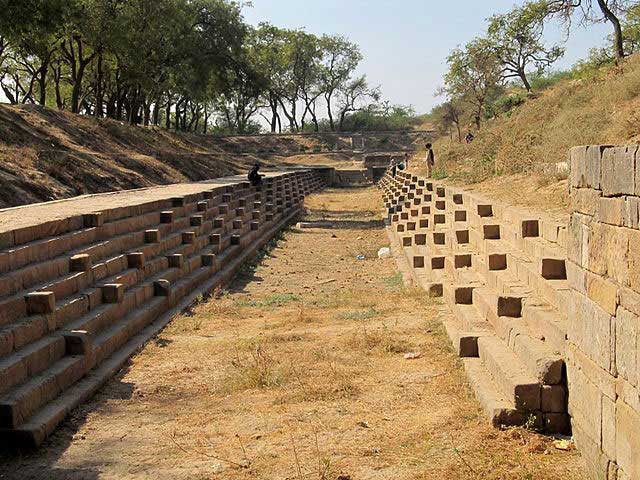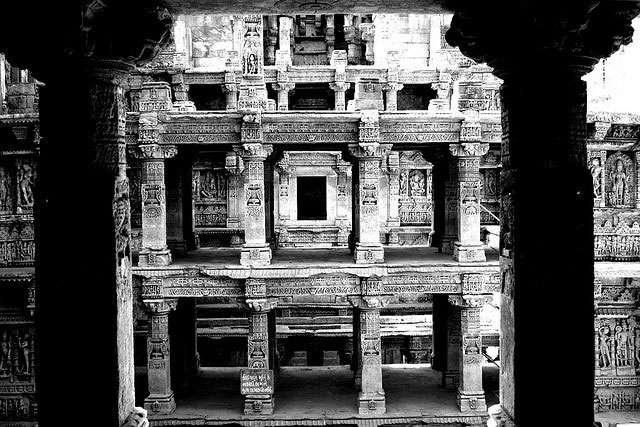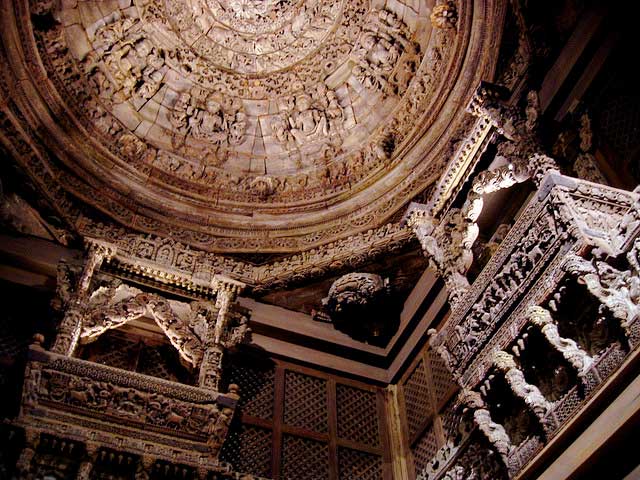Patan is the former capital of Gujarat. The ancient, fortified town was built by the then king Vanraj Chavda in 745 AD. Attacked by Mohamud Ghazni in AD 1024, the city sprung from its ruins only to become the Suba headquarters of Sultanate Delhi, before it was known as the capital city of the Gujarat Sultanate. Famous for its exquisitely woven Patola sarees, Patan is a hub of the finest-made textiles in the world. Situated around 130km from the capital of Gujarat, Ahmedabad, the city is well connected to roads and railways to other regions. Due to its extreme climatic conditions, best time to visit Patan is during winter when the temperature drops down. Let us take a look at the attractions of this ancient town of Patan.
1. Rani Ki Vav
The most famous tourist location is this step-well, an excellent example of subterranean architecture. Built by Rani Udyamati of the Solanki dynasty, Rani Ki Vav is one of the finest architectures of India, adorned with sculptures of deities, including those of Ganesh on the lower levels, preceded by those of Vishnu, Laxmi-Narayan, Uma-Mahesh etc. Rani Ki Vav is quite possibly the only Vav that has such intricate patterns and religious ornamentations in a large amount. The staircases are straight as well as lateral, along with broad corridors that are surrounded by elaborately carved walls. Many of its walls and corridors are still found in their prime condition.
2. Sahastralinga Talav

Found in the north-western part of Patan, on the banks of the Saraswati river, Sahastralinga Talav is an artificial tank built by Siddhraj Jaisingh— the Chaulakyan ruler of Gujarat. The water tank, which is now dry, is known to have been cursed by a woman named Jasma Oden, who refused to marry Siddhraj Jaisingh. The Talav would have contained about 4,206,500 cubic meters of water. Around the tank are found the few remaining ruins of the thousand shrines dedicated to Lord Shiva. Pentagonal in shape, Sahastralinga Talav is about 1km broad, and spans an area of about 17 hectares. The channel running from north to south, and connecting to the Saraswati river, alongside the well steps, side-elevation and the bridge, are the most interesting parts of the tank.
3. Khan Sarovar
Located in the southern part of Patan, Khan Sarovar is a water reservoir constructed using stones from ruined structures, by Khan Mirza Aziz Kokah, the then governor of Gujarat. Created somewhere around 1886 to 1890, the large water tank is square in shape, and measures 1228 by 1273 feet. It is separated only by pillars of Hindu workmanship, and the tank contains stone steps and masonry on all four sides along with the outflow of waste-weir. Thus, the water is prevented from rising above a certain height during the rainy season.
4. Hemachandracharya Gyan Mandir
The first one to formulate grammar of Gujarati language, Hemachandracharya was a renowned and great scholar and grammarian. The Gyan Mandir contains around twenty-five thousand ancient manuscripts of Sanskrit and Prakrit, due to which, Patan became a seat for Sanskrit and Prakrit learning. It is the richest collection of its kind in India, and bears testimony to the fact that Patan was once a place where genuine scholarship flourished. Previously known as the North Gujarat University in 1986, Hemchandracharya Gyan Mandir has its roots in the ancient indigenous tradition of learning.
5. Jain Temples
Patan contains more than a hundred Jain temples built in the Solanki era. One of the largest temples is the Panchasara Parshvanath Jain Derasar, with refined stone carvings and white marble floors, a depiction of the vast Jain architecture. All Jain temples were previously carved in wood, but the builder Uda Mehta declared that all temples be built in stone, for one small mishap might destroy the entire temple.
Patan is one of the most historic and fortified towns of Gujarat, and sits close to Ahmedabad. The various tourist attractions make it a sought after destination for tourists. One can enjoy the natural yet ancient surrounding that makes it so interesting for locals and explorers alike.
Some More Tourist Destinations In Gujarat:
- Major Attractions In Vadodara
- Major Attractions In Ahmedabad
- Major Attractions In Somnath



